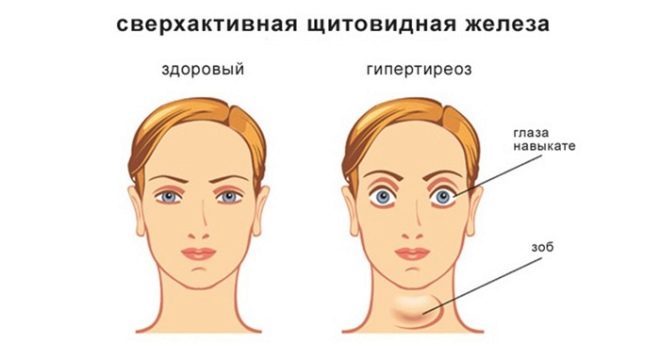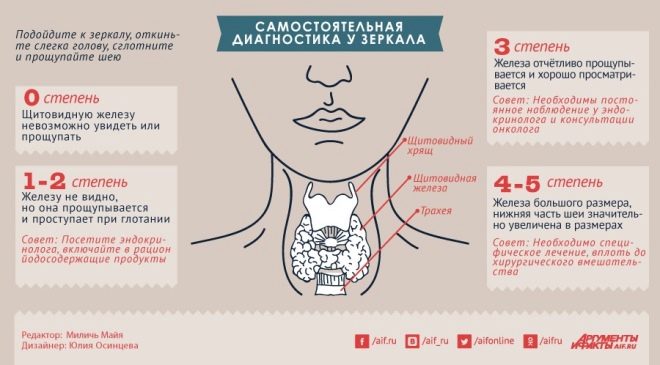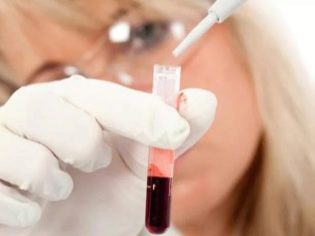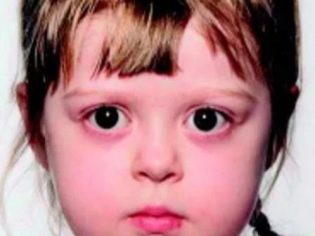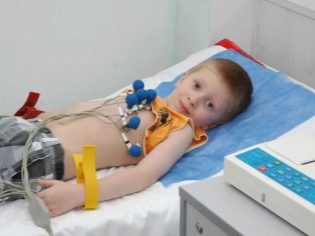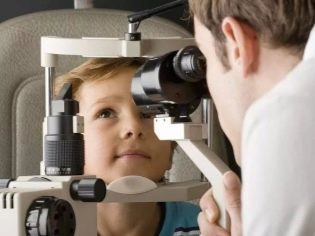Hyperthyroidism in children
In pediatric endocrinology, diseases of the thyroid gland are extremely common. In some regions of our country, the incidence is quite high. The danger of these pathologies is that they can lead to the appearance of the most unfavorable clinical symptoms in a baby. Our article will tell about children's hyperthyroidism.
What it is?
Hyperthyroidism is not a disease, but a pathological condition. His appearance can lead various diseases of the thyroid gland. The increase in the number of peripheral thyroid hormones - T3 and T4 with a decrease in TSH (pituitary hormone) indicates the presence of thyrotoxicosis in the body. This pathological condition is often recorded in both children and adults. Boys suffer as often as girls.
Healthy thyroid tissue consists of numerous thyrocyte cells. These powerful energy stations produce specific hormones that have a pronounced systemic effect on the entire body. Thyrocytes are grouped into special anatomical structures - follicles. Between adjacent follicles there are areas of connective tissue, in which nerves and blood vessels are located, which carry out the trophism of the thyroid gland.
Normally, peripheral thyroid hormones have a significant effect on the functioning of many internal organs. They affect the number of heartbeats per minute, help keep blood pressure within the age norm, participate in the metabolism, affect mood and nervous activity. With age, the amount of peripheral hormones varies somewhat. This is due to the physiological characteristics of the human body.
Due to the active growth and development of the child, the level of peripheral hormones is quite high.
The reasons
Various pathological conditions lead to the development of increased production of peripheral thyroid hormones in a baby. To date, thyroid disease in pediatric endocrinology significantly come to the fore. Their treatment is quite long and in some cases may even last several years.
The development of increased blood levels of T3 and T4 in a child contribute to:
- Diffuse toxic goiter or Graves disease. This condition is characterized by a pronounced enlargement of the thyroid gland. Heredity plays an active role in the development of the disease. The disease occurs with the appearance of pronounced metabolic systemic disorders. Diffuse enlargement of the thyroid gland contributes to an increase in blood levels of peripheral hormones.
- Nodular goiter. This disease is characterized by the appearance of dense areas in the healthy tissue of the thyroid gland. Most often, this pathology is associated with a lack of a sufficient amount of iodine in the baby’s diet. The disease is endemic, that is, it is found in regions very remote from the sea. The first signs of the disease can develop in children aged 6-7 years.
- Congenital forms. This pathology is formed in the period of intrauterine development. This usually occurs during a complicated pregnancy of a woman who suffers from diffuse toxic goiter. According to statistics, 25% of babies born afterwards have signs of clinical or subclinical thyrotoxicosis.
- Injuries to the neck. Traumatic injuries of the cervical vertebrae contribute to mechanical damage to the thyroid tissue, which contributes to the further appearance of thyrotoxicosis in the child.
- Neoplasms of the thyroid gland. Growing benign or malignant tumors contribute to the disruption of the endocrine organ, which is accompanied by the appearance in the child of clinical signs of thyrotoxicosis.
The most common pathology that causes thyrotoxicosis in a child is diffuse toxic goiter. With this pathology there is an increase in the size of the thyroid gland. It may be insignificant or appear quite bright.
Endocrinologists secrete several degrees of enlargement of the thyroid gland:
- 0 degree. It is characterized by the absence of any clinical and visible signs of goiter.
- 1 degree. Dimensions of goiter exceeds the distal phalanx of the thumb of the baby, which is being examined. When visual inspection by a local enlargement of the thyroid gland is not observed. Goiter elements are detected in the baby only during palpation.
- 2 degree. Visual inspection and palpation goiter is very well defined.
Symptoms
The impaired work of the thyroid gland leads to the emergence of a variety of clinical signs in a sick child at once. Their severity may be different. With the active course of hyperthyroidism and a significant excess of peripheral hormones T3 and T4, adverse symptoms of the disease are expressed significantly.
In some cases, hyperthyroidism is clinically practically not manifested. This indicates the presence of a subclinical variant of the course. To detect violations in the thyroid gland in this case is possible only when conducting laboratory tests and determining peripheral hormones.
When a child has many adverse symptoms, doctors talk about the presence of a clinical form of hyperthyroidism.
Among the most common clinical signs of the disease are the following:
- Rapid pulse or abnormalities in the work of the heart. Often this is manifested by the appearance of an excessively accelerated pulse after minor physical or psycho-emotional states. With a pronounced course of hyperthyroidism, the heart rate rises also in a state of complete rest.
- Blood pressure jumps. Systolic (upper) pressure is usually increased. Diastolic (lower) in most cases remains within the normal range. These conditions characteristic of hyperthyroidism also contribute to an increase in pulse pressure.
- Behavior changes. The child becomes overly aggressive, easily excitable. Even a little criticism can contribute to a stormy response. Typically, such mood swings are most pronounced in adolescents. Some children have real short flashes of anger.
- Tremor of the limbs. It is a classic sign of pronounced clinical hyperthyroidism. It is detected during the clinical examination by a doctor of any specialty. The tremor (shaking) of the hands is usually checked when the baby pulls both hands forward with eyes closed. Usually hand shake is shallow, not sweeping.
- Eye symptoms. Manifested in the form of exophthalmos (a small protrusion of the eyeballs), too wide opening of the eyes, rare flashing, various disorders of convergence (ability to focus on objects) and other specific signs. The doctor checks for the presence of these symptoms in a child during a clinical examination. Not only children's pediatric ophthalmologists, but also local pediatricians have the skills to determine these clinical signs in babies.
- Sleep disturbance. This symptom manifests itself in babies of different ages. Usually it is well manifested in children aged 3-7 years.The baby is very difficult to put to bed, he often wakes up in the middle of the night. Often the child is disturbed by the night rustles that make him get up several times during the night.
- Pathological mood enhancement. In some cases, a child with signs of thyrotoxicosis will experience spontaneous flashes of great joy and even euphoria. Usually such episodes are short-lived and can be replaced by pronounced aggressive behavior. The mood of the baby is aligned after the appointment of special medicines.
- Pronounced ripple in the vessels of the neck. This symptom is associated with hemodynamic changes. The increase in pulse pressure leads to a strong blood supply of the main as well as peripheral blood vessels. Usually this symptom is clearly visible on the vessels of the neck.
- Gastrointestinal disorders. To a greater extent in babies, this symptom manifests itself in the appearance of frequent diarrhea. A child can go to the toilet several times a day. Prolonged diarrhea leads to various disorders in metabolic processes and adversely affect the work of the entire digestive system.
- Increased appetite. A kid suffering from hyperthyroidism constantly wants to eat. Even if the child has eaten well at lunch or dinner, then after a few hours he is very hungry again. The baby has a constant feeling of "wolf hunger." In this case, the baby does not gain extra pounds at all, but, on the contrary, is losing weight.
Diagnostics
If any suspicion arises that the child has signs of hyperthyroidism, the child should be shown to the doctor. If possible, consult a pediatric endocrinologist. This doctor will be able to carry out all the necessary complex of diagnostic measures that will help to establish the correct diagnosis.
It is easy to install hyperthyroidism. A comprehensive clinical examination is carried out to identify clinical forms, including mandatory palpation of the thyroid gland, as well as auscultation of the heart to detect cardiac abnormalities. After the examination, the doctor prescribes a series of laboratory tests, which are needed to confirm the pre-established diagnosis. These include the determination of peripheral hormones of the thyroid gland T3 and T4, as well as the quantitative measurement of the blood hormone TSH in the blood.
In hyperthyroidism, the content of T3 and T4 exceeds the age norm, and the level of TSH back decreases.
To establish the clinical form of the disease, the physician may additionally prescribe tests to identify specific antibodies to the thyroid tissue. Usually this analysis is informative for establishing the autoimmune pathologies of this endocrine organ.
To identify functional disorders, doctors also use additional diagnostic methods. They necessarily include an electrocardiography of the heart. An ECG can detect any cardiac rhythm disturbances that are manifested by sinus tachycardia or various forms of arrhythmias. To identify the associated complications, the baby can be referred for consultation also to a neurologist and an ophthalmologist.
Treatment
Therapy of hyperthyroidism is largely aimed at the normalization of elevated levels of peripheral thyroid hormones. For this purpose, various drugs that have a therapeutic effect on thyrocytes are used.
The choice of treatment regimen remains with the physician and is strictly tailored to the child’s underlying thyroid gland, which caused the development of hyperthyroidism.
To normalize the increased blood levels of peripheral hormones are used:
- Antithyroid drugs. They help to cope with clinical hyperthyroidism. Can be appointed for a long reception. These drugs have pronounced side effects, therefore, are usually not prescribed for use throughout life.During treatment, the content of leukocytes in the total blood count is regularly monitored.
- Radioactive iodine. It is used with the ineffectiveness of early conducted conservative treatment. The implementation of this technique is possible only in conditions of special departments designed for radiotherapy. To normalize the condition and eliminate the clinical signs of hyperthyroidism, a course of treatment with radioactive iodine preparations is prescribed. The effectiveness of the method is quite high, however, in some cases, the recurrence of the disease is possible.
- Beta blockers. These medicines reduce the heart rhythm and restore normal cardiac performance. They are prescribed for severe clinical hyperthyroidism and are used for course administration. With improved well-being, drugs are canceled.
- Normalization of the daily routine. All babies with clinical signs of hyperthyroidism should avoid strong physical and psycho-emotional stress. Excessive loads at school can lead to a deterioration of the child’s well-being and long-term persistence of signs of hyperthyroidism.
The fact that such hyperthyroidism in children, see the following video.







